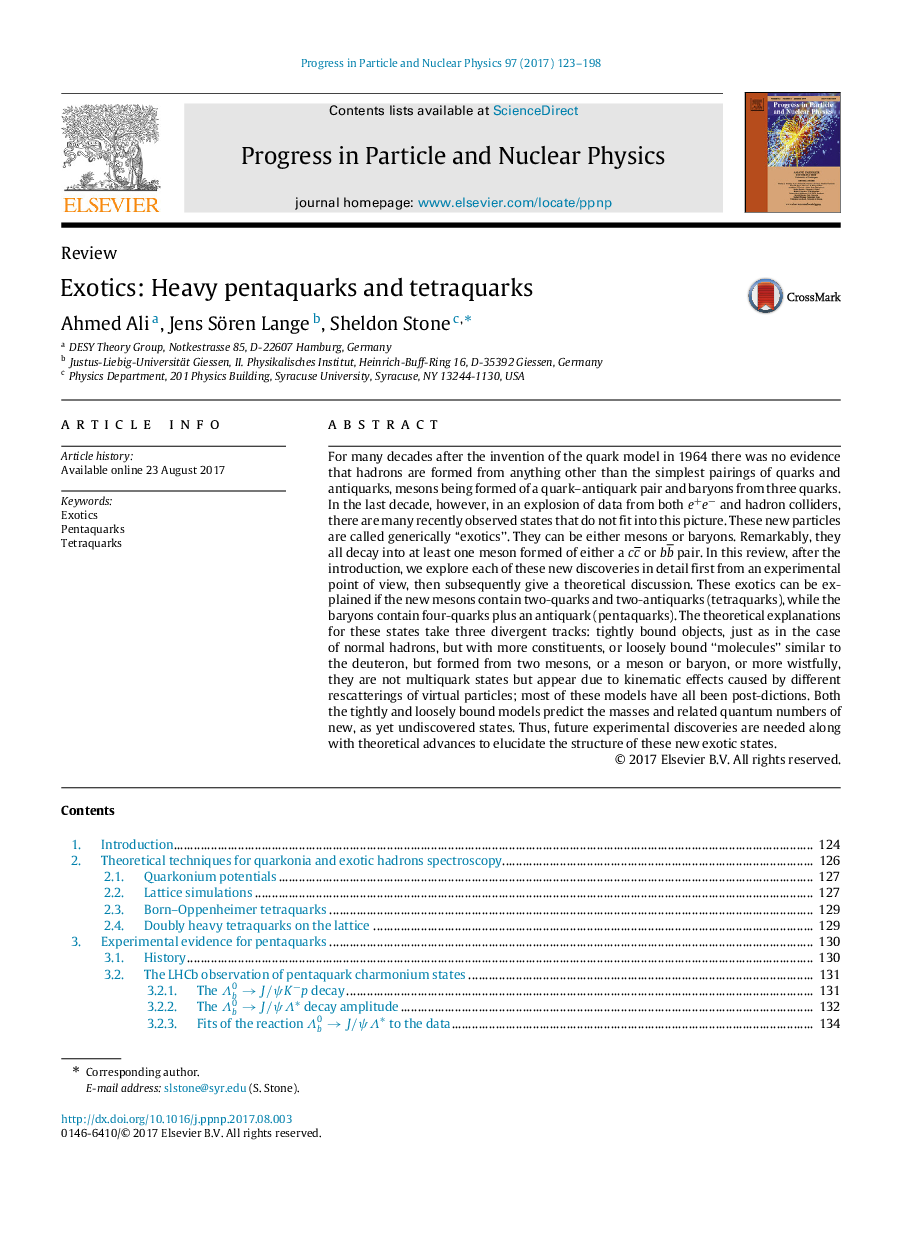| کد مقاله | کد نشریه | سال انتشار | مقاله انگلیسی | نسخه تمام متن |
|---|---|---|---|---|
| 5495573 | 1529344 | 2017 | 76 صفحه PDF | دانلود رایگان |
عنوان انگلیسی مقاله ISI
Exotics: Heavy pentaquarks and tetraquarks
دانلود مقاله + سفارش ترجمه
دانلود مقاله ISI انگلیسی
رایگان برای ایرانیان
موضوعات مرتبط
مهندسی و علوم پایه
فیزیک و نجوم
فیزیک هسته ای و انرژی بالا
پیش نمایش صفحه اول مقاله

چکیده انگلیسی
For many decades after the invention of the quark model in 1964 there was no evidence that hadrons are formed from anything other than the simplest pairings of quarks and antiquarks, mesons being formed of a quark-antiquark pair and baryons from three quarks. In the last decade, however, in an explosion of data from both e+eâ and hadron colliders, there are many recently observed states that do not fit into this picture. These new particles are called generically “exotics”. They can be either mesons or baryons. Remarkably, they all decay into at least one meson formed of either a cc¯ or bb¯ pair. In this review, after the introduction, we explore each of these new discoveries in detail first from an experimental point of view, then subsequently give a theoretical discussion. These exotics can be explained if the new mesons contain two-quarks and two-antiquarks (tetraquarks), while the baryons contain four-quarks plus an antiquark (pentaquarks). The theoretical explanations for these states take three divergent tracks: tightly bound objects, just as in the case of normal hadrons, but with more constituents, or loosely bound “molecules” similar to the deuteron, but formed from two mesons, or a meson or baryon, or more wistfully, they are not multiquark states but appear due to kinematic effects caused by different rescatterings of virtual particles; most of these models have all been post-dictions. Both the tightly and loosely bound models predict the masses and related quantum numbers of new, as yet undiscovered states. Thus, future experimental discoveries are needed along with theoretical advances to elucidate the structure of these new exotic states.
ناشر
Database: Elsevier - ScienceDirect (ساینس دایرکت)
Journal: Progress in Particle and Nuclear Physics - Volume 97, November 2017, Pages 123-198
Journal: Progress in Particle and Nuclear Physics - Volume 97, November 2017, Pages 123-198
نویسندگان
Ahmed Ali, Jens Sören Lange, Sheldon Stone,